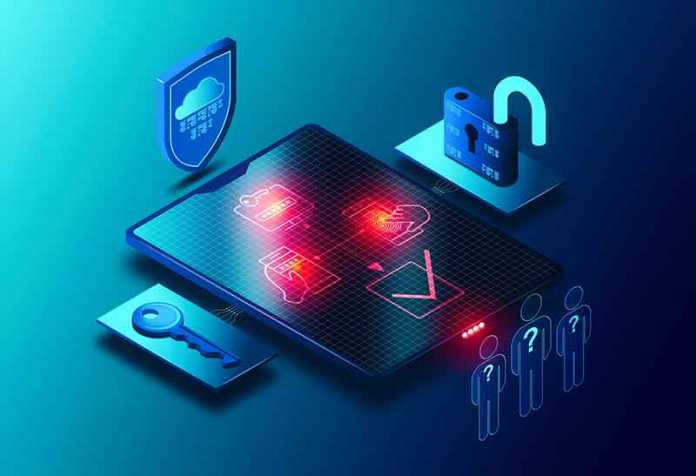The introduction of cloud software environments has brought ease yet made the hosted applications and data vulnerable to potential hackers to the equivalent extent. The conventional encryption frameworks are no longer enough to protect such cloud computing resources since they do not correspond to the ever-changing technology. It results in more chances of potential attacks on network data.
Zero Trust is an approach to secure your cloud resources and data. It addresses the exposures and challenges of current businesses that this modern digital revolution has brought about. The security model also ensures the exemption of your cloud software environment through Zero Trust solutions that allow authentication of every operation ahead of earning a permit to the system every time. For more information, visit: https://nordlayer.com/zero-trust-security/
A zero-trust operation is mandatory for every digital organization to keep their private data safe. Apart from protection, it makes the multi-cloud network less complicated and can be operated despite the locality. Here is your comprehensive directory to zero-trust security infrastructure.
What is Zero Trust?
It is a security model that encrypts digital workload and hybrid multi-cloud software environments. The zero-trust criterion trusts nobody and authenticates every integer every time they ask for a permit to the resources and data of the structure, be it a part of the complex or not. This security technique assumes that software environments have no particular entry points and can be local, multi-cloud, or hybrid, having reserves and workers from anywhere.
ZTNA (zero-trust network access) is part of the entire zero-trust policy. It is a tech approach linked with a zero-trust framework and aids in executing Zero Trust. It governs the entry across the web, confirming that linked gadgets do not retrieve resources on the web but the ones they are approved to.
The Fundamental Tenets Behind the Zero Trust Standard
Continuous verification
Trust nobody and validate all is the underlying postulate of the zero-trust security model. The zero-trust system treats every entity as a possible attacker and proceeds to authorize resources at every vacant data step. An effective Zero Trust model disconnects every connection to authenticate traffic, even encrypted traffic, in time before it reaches its destination to circumvent potential risks.
Limited Privilege Approach
With a zero-trust configuration, the users can have entry only to the resources required to execute their functions and never to the entire net. The zero-trust strategy authorizes access requests based on user individuality, locality, and the type of resources being instructed. It reduces unnecessary entry into the entire system. This eliminates the area of possible attacks and reduces the risks of infecting other resources across the web.
Reduction of The Blast Radius
A decisive safety criterion curtails the influence of potential risks, and that is the third underlying principle of the zero-trust receptacle. The Zero Trust model eradicates the risk by lessening the invasion ground area. It miscalculates the span of conceivable hazards incurred by violations through segmenting permits and end-to-end encryption.
How does the Zero-Trust Security Model Work?
The three precepts mentioned above are fundamentals on which the Zero Trust model is established. The zero-trust frame is based upon eight pillars to meet today’s sophisticated networking demands, each concentrating on a particular area to execute the Zero Trust criterion:
- Workforce Security
The main focus of this pillar is entry control strategies to approve users to assemble to the format. Attribute-based entry regulators will be involved in enforcing this pillar. - Entry Points Protection
This pillar monitors all endpoint equipment, which includes phones, laptops, servers, etc. - Application Security
Maintaining and protecting application layers is crucial to a strongly devised zero-trust security posture. This security layer protects every workload and software receptacle to circumvent unauthenticated access across the network. - Data Security
A vigorous Zero Trust strategy contains a data supervision technique that focuses on adding an extra coat of protection to sensitive data of the network. This is done by access segmentation and data characterization so that data is only visible to the users that expect to act. - Analytics
Maintaining a trail of the metrics of the zero-trust framework’s elements provides you with vital insight into the system and user experience. Additionally, analyzing your network to such an extent enhances risk detection, and you can make necessary security resolutions to accommodate constantly evolving security postures. - Automation
Automation focuses on abolishing human glitches and enhancing network performance by applying policies persistently across the board. - Groundwork Security
This point ensures the protection of multi-cloud resources against unauthenticated access and future threats. - Security of the system
Network security guarantees that users can not access data and other resources across a network without authorization. It requires Applying micro-segmentation techniques, end-to-end encryption, etc.
Conclusion
Zero Trust is an advanced approach to traditional security systems based upon trust but verify as well model. The conventional methods had made the network vulnerable to probable risks by trusting the consumers and enabling them to have unauthorized access once they entered the system. In comparison, Zero Trust is a cyber security stance that abolishes absolute trust and constantly authenticates every stage of digital communication.
































































